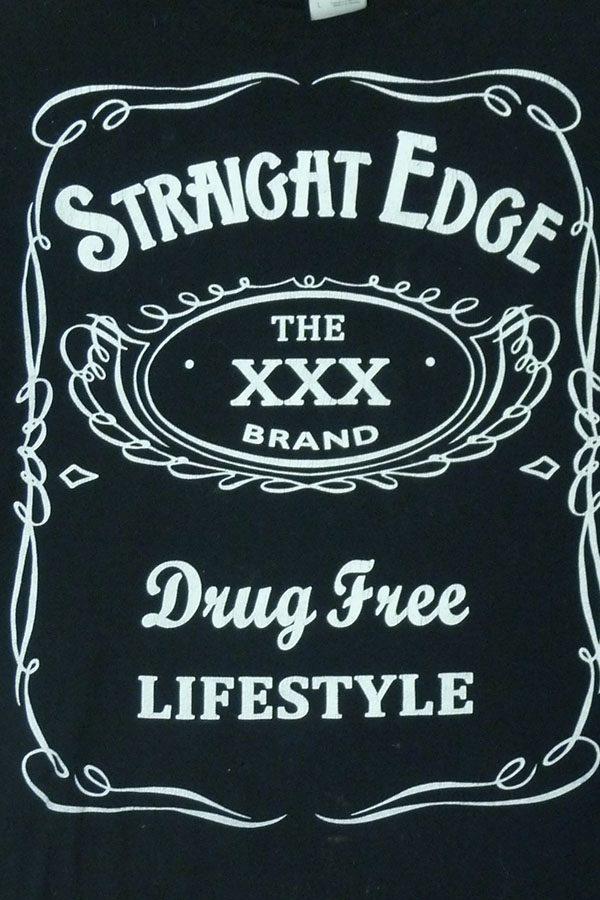Out Of Step: An In-Depth Look at the Straight Edge Life
What exactly is straight edge and how did an entire lifestyle dedicated to the rejection of drug use become popular enough to create a worldwide subculture? Prepare to find out.
Straight Edge. You may have heard about me bragging about this at some point. How this is what I am and how I live my life. A lifestyle of rejection and abstination from the usage of recreational drugs, including alcohol and cannabis. While the extent of which is often up for interpretation (some will even avoid caffeine and prescription medication), the core of the matter is largely the same. I myself have been this way since about freshman year and I don’t regret it for a single second. It’s easily the greatest decision of my whole life. I wish I knew more people like this, but that’s its own downside. Not many people are. You’ll find somebody else who’s straight edge every now and again, but never as frequently as I’d like. I truly don’t think people understand and appreciate and live it to the same extent I do. People would joke about it to me sometimes, and while it’s fun with friends, the people who just don’t get it come off slightly condescending. Maybe that’s because they just don’t know. Well, what better time to fix that than now?
We may as well start in the very beginning. In June of 1981, Minor Threat, a punk rock band from Washington, D.C., released their debut self-titled 7” EP. The album, which saw instant fanfare in the D.C. punk scene, ended with a song called “Straight Edge” an angry wake-up call against the drug usage once so common in punk rock during the 1980s. An anti-drug movement had already been growing in D.C. at the time, so this song made waves across the whole city, further energizing and empowering this group. However, when this song was written by Minor Threat’s lead singer, Ian MacKaye, he wasn’t intending this to fuel a whole movement at all. What he did was write a song about his actual personal choice to avoid drugs which then spread like wildfire within the area. In addition to a couple of other songs he wrote for the band, like “Out Of Step” and “In My Eyes”, Ian MacKaye, gave the straight edge scene a name, a purpose, an audience, and a figurehead of some sort (which MacKaye wasn’t exactly willing to be), subsequently elevating MT as the unofficial band of the scene.
Like many other movements, however, it always has to branch out. MT served as inspiration for straight edge bands not only within D.C. city limits, including Government Issue and the Teen Idles, but along the rest of the US east coast, including Boston hardcore group Negative FX. The movement even gained traction on the opposite coast too, with acts like 7 Seconds from Nevada and Uniform Choice from California making waves in the scene.
Along with this migration came a new symbol of the scene: a large black X on the back of both hands. This originated from under-aged kids attending a show at a bar for an edge band. The kids and bartenders reached the compromise of drawing black Xs on the back of the hands of the under-aged kids, but it was the straight edge scene that claimed it for their own. Kids over 21 wore them too, and they even wore them everywhere they went. From this, the letter X became synonymous with straight edge, as a sign of a drug free life and even to abbreviate the term “straight edge” to SxE. Ironically enough, they even adopted XXX as their own symbol, but whether this was intentional or not is beyond me. It could be either one.
From there, the band Youth of Today took it to a new level, further separating it from the drug use so common within punk rock even in the 90s, and even adding a vegan element (which I personally don’t follow) that found its place in other parts of punk rock, too. After the 1990s, SxE slowed down a lot, without much coming from the scene, and it would only re-emerge with the rise of former WWE wrestler and MMA fighter CM Punk, who never dabbled much in music but did make straight edge a key part of his personality, both in and out of the ring.
As for me, SxE is a very important piece of who I am. Where I go with straight edge, I proudly exclude caffeine from the massive “blacklist” of drugs I avoid like the plague, and I reluctantly have prescription ADHD meds crossed off that list, too (though I’m flushing them down the toilet as soon as I can work without them). As a lover of pizza and bacon cheeseburgers, it’s safe to say I might not be vegan, either, but not all edge kids are. The moral of the story is still the same.
Clean living is something many take for granted. I want to maintain this for myself as long as possible, and if all goes my way, I’ll still be straight edge on the very day I die. Yes, I’m that dedicated. So dedicated, in fact, I’m getting at least two tattoos dedicated solely to it. And I can get away with that because most people in the entire straight edge scene have ink, including Ian MacKaye himself.
The point is, I don’t do drugs. I never have and I never will. That simple. Having been sober for almost 19 years so far, I’m proud of this lifestyle I chose for myself. In fact, I encourage as many people as possible to live straight edge while they still have the chance. You’re only clean once. Why not take advantage of that time now and extend it out for as long as possible? Trust me, it’s not a decision you’ll regret. I would know.

Andy is a GHS Super Senior, a first-time Paw Print staff member, and a professional ginger with nearly 19 years of experience. He likes forgetting to finish...








